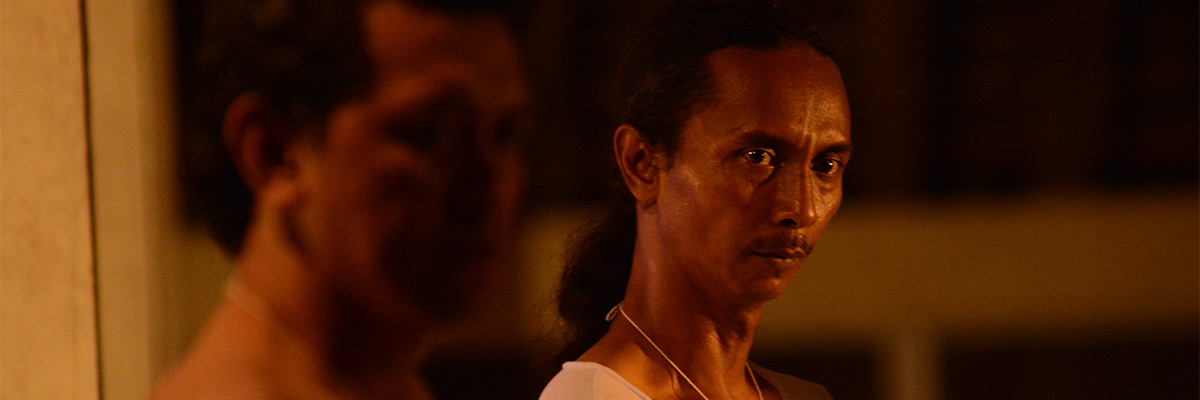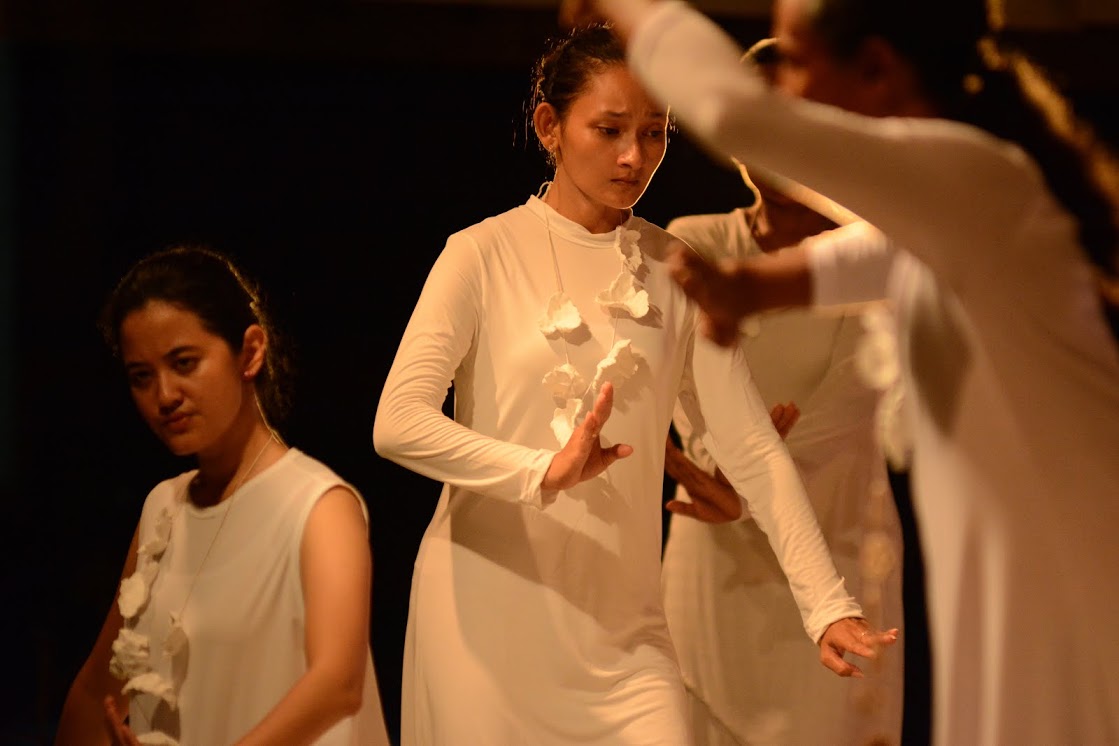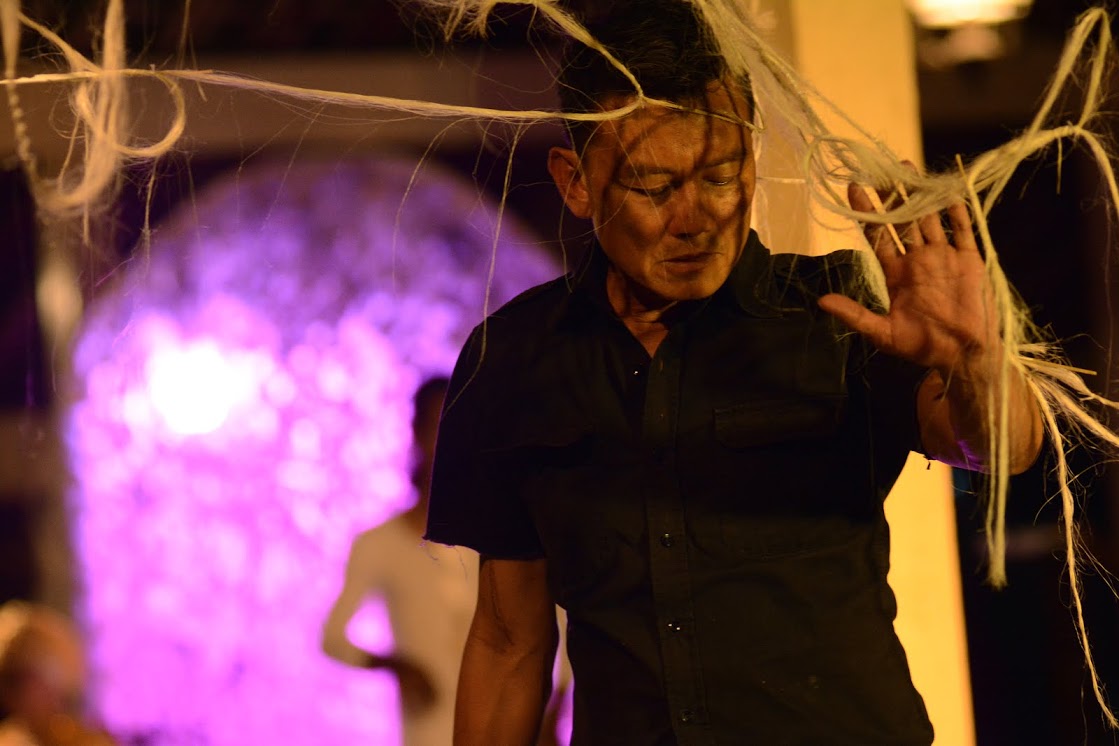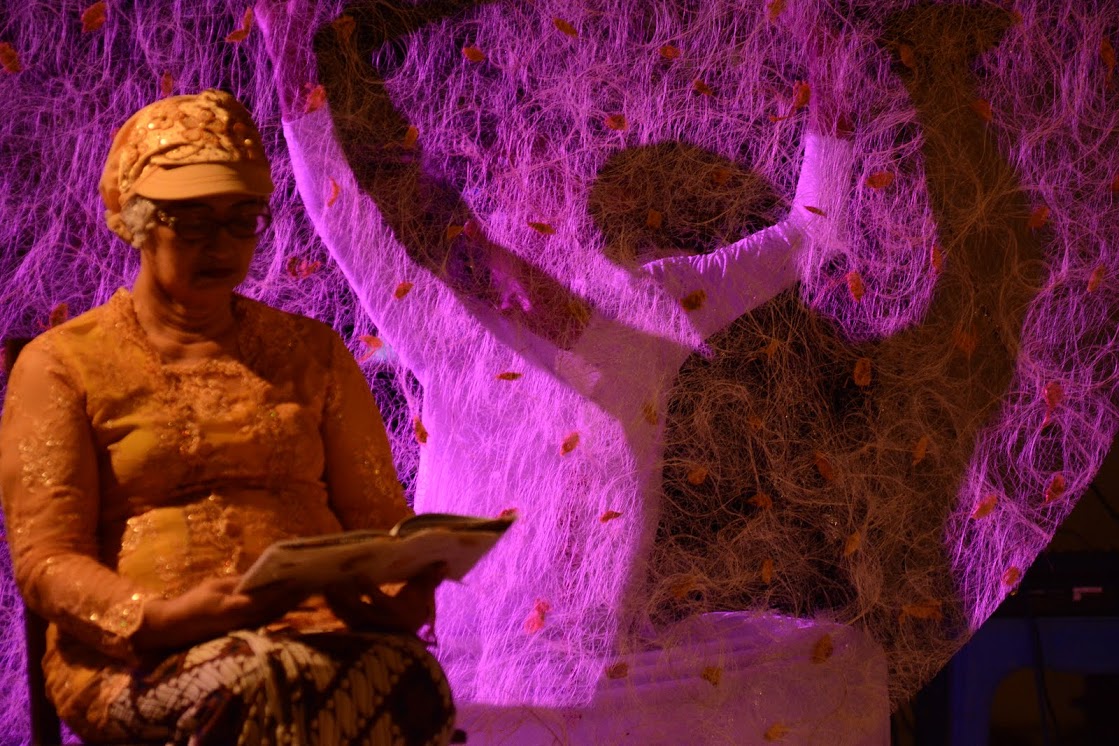
Kesupen
By Tony Yap Company (Melbourne, Australia) & Surya Kencana (Yogyakarta, Indonesia)
Kesupen is a process of transformation: to forget something, in order to see something new.
Kesupen is part dance, part song cycle, framed by contemporary music, and visual installation.
Visual installation and a contemporary score performed live hold space for the dance and singing. Choreographically, Yap’s elemental, masculine style is counterpointed by the traditional Srimpi dance, adapted especially for this work.
The artistic language for Kesupen has evolved in our awareness of the artificiality of separating, in the Western tradition, the modalities of dance, plastic material and sound/music.
On stage are five dancers, one singer, and two musicians.
Email us to obtain the password for the full length HD video seen below.
You can also find the short video on Youtube
Developments
Kesupen has been developed in Australia and Indonesia in two stages over late 2013 – early 2015. It is now ready for premiere.
Support
Early developments of Kesupen have been supported through Asialink and Multicultural Arts Victoria. In 2015, Kesupan is supported by the Victorian Government through Arts Victoria, and the Besen Family Foundation via Creative Partnerships Australia.
Background and Cultural Context
This new work arises from the decade-long personal and creative relationship between Tony Yap, Agung Gunawan, and Master R.Ay Sri Kadaryati Ywandjono, who is a deeply respected cultural figure in Yogyakarta. The Dance Master for the Kraton (Palace) and the Sultan of Yogyakarta, Ibu Kadaryati has created new dance forms that are now part of the traditional dance canon, notably in the srimpi form which is key to this work. Kesupen is her first ever international collaboration. For this work, Ibu Kadaryati has created an original libretto in the Javanese tembung mencapat style of poetry in song form, and also new choreography together with Agung Gunawan, her former student, an independent choreographer, performer and festival director.
The longevity of association between the Australian and Indonesian artists has allowed them to form a way of working that can incorporate their respective traditional processes within contemporary interdisciplinary practices.
Kesupen has the delicacy of finely-honed collaborative practice, and the authority of involvement with a Master Artist who can take traditional forms into exciting new territory.
Srimpi dance has only been seen outside the Palace in Yogyakarta since the 1960s. This new contemporary work Kesupen is an exciting new phase in its experimentation and evolution.



